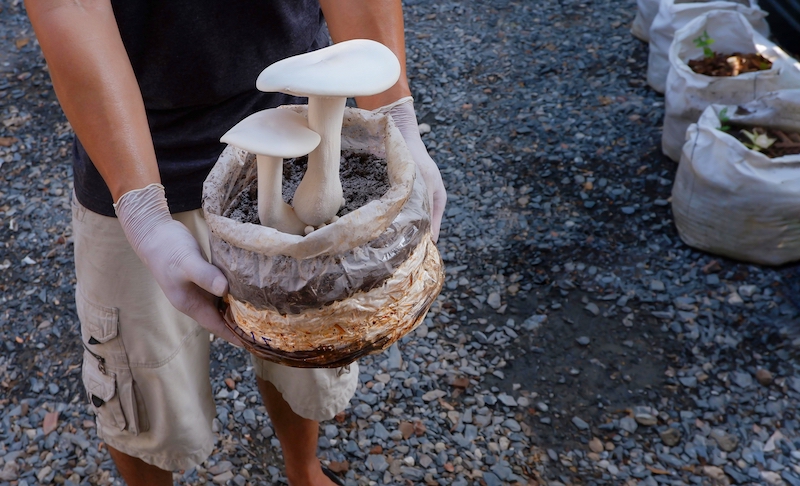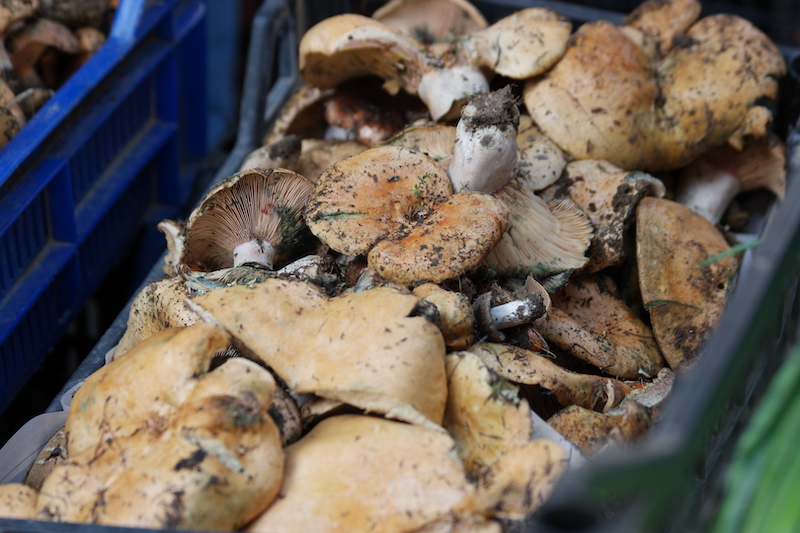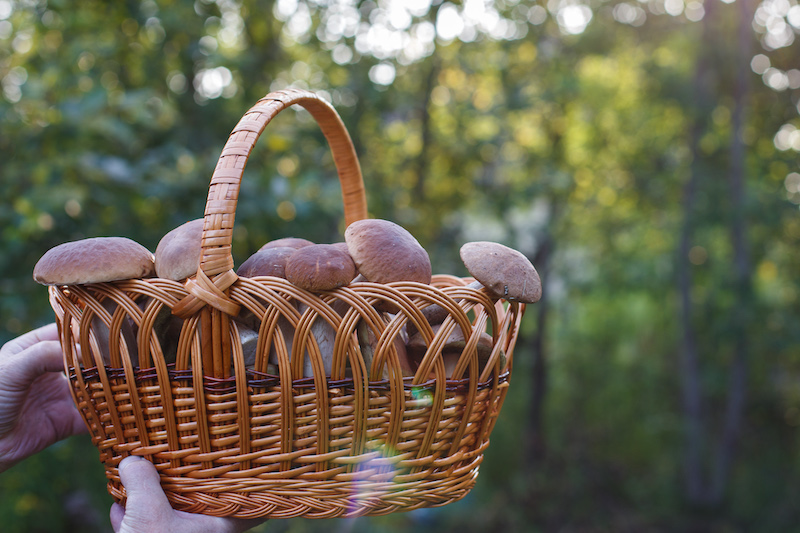Mushrooms are visually just cool to look at. They come in so many different colors, sizes, and textures. Creating a mushroom garden, inside or outside your home, can be a fun and educational experience. Your garden can be full of edible, delicious mushrooms such as lion’s mane and oyster mushrooms. Or you can choose to grow magic mushrooms containing psilocybin, depending on where you live. Either way, a garden full of fungi is a great addition to your home.
First things first. If you want to create a mushroom garden you’ll need to know all about garden fungi. How are mushrooms grown? How long does it take a mushroom to grow? How can I get started? Keep reading to find out. Just remember, cultivating and consuming magic mushrooms is illegal in many states and at the federal level. However, studying the spores of magic mushrooms is legal in the majority of states – the exceptions being California, Georgia, and Idaho. Plus cultivating classic edible mushrooms is perfectly legal, and delicious.

How Do Mushrooms Grow?
Before you get started on creating a mushroom garden, it’s important to know how mushrooms grow. Mushrooms are fungi. Fungi are microorganisms that rely on dead or decaying organic matter for nutrients. This can be trees, logs, or other plant matter found in the soil or dirt. Unlike plants, they have spores instead of seeds. They grow in a mixture of material called substrate, that acts as soil does for plants. Where plants have root systems, mushrooms are mycelium. Mycelium serves the same purpose as roots – moving nutrients from the substrate to the rest of the mushroom.
How long does it take a mushroom to grow? All varieties of magic mushrooms follow the same lifecycle, while the timeline for each phase may vary slightly. Magic mushrooms usually take four to six weeks from inoculation to harvest. Regular mushrooms also follow a similar process but can take weeks to months for harvesting.
Inoculation – Spores are added to a substrate. The substrate can be a mixture of common materials such as coffee grounds, wood pellets, or even cardboard. While you can buy spores in a variety of places, we recommend our own collection of psilocybin spores from Top Mushroom Spores.
Incubation – Putting your substrate in a warm dark place. Magic mushrooms average a couple of weeks in incubation. When the substrate is completely colonized with bright white mycelium, that’s when the incubation process is complete.
Fruiting – After incubation, it’s time to begin fruiting your mushrooms. They need to be exposed to air with some moisture and light. Just not too much light. A windowsill provides plenty enough light for your mushroom garden.
Harvesting – Finally, your mushrooms are ready to harvest. You can now enjoy your mushrooms and the sense of accomplishment that came from growing them yourself.
Generally, for magic mushrooms, the whole growing process takes four to six weeks.

A Garden of Fungi
Creating a mushroom garden is easier than ever with the rise in popularity of mushroom growing kits. If you’re just looking to start your own mushroom garden without spending a lot of money or needing a lot of experience, these kits start around $15 and are available easily at chain stores like Walmart and online at Amazon. Unfortunately, due to the complex legality, kits for magic mushrooms are hard to come by, if they exist at all. You’ll just have to learn how mushrooms grow and create a garden yourself.
Creating a mushroom garden at home requires the same basic materials no matter what species of mushroom you plan to grow. You’ll need substrate, or a growing medium, a container such as a jar, bag, or bucket, and of course your spores. Sterilizing your equipment and substrate can help create the ideal environment for mushrooms and reduce any possible competition for nutrients. There really are a lot of different options for methods to grow your own mushrooms, making the question “How are mushrooms grown?” even more complicated.
However, there are a few keys to growing mushrooms at home are:
A dark, humid area. You can control the humidity with a cover or by keeping the substrate moist by spraying water or even using a damp cloth. Basements are a great spot for your garden fungi to thrive.
The right substrate. Just like different plants have different soil mixtures, different mushrooms prefer different growing mediums. These can include coffee grounds, straw, sawdust, or even a chuck of wood.
If you want your mushroom garden to be both an agricultural tool and a work of art of a conversation piece, try using different grow containers such as mason jars or buckets (you can even paint the outside to give the bucket some fun color). These can make growing garden fungi garden even more fun and visually appealing. Especially when compared to growing mushrooms in a plastic bag. Laundry baskets can even be used to house a mushroom garden.
Some really cool ways to garden fungi outside include using a woodchip base around a tree, using logs (especially for shiitake mushrooms, they love logs), or scattering mushrooms here and there in shady spots around the yard of the garden area.

Growing Mushrooms for Beginners
One of the most important elements of figuring out how long does it take for a mushroom to grow is patience. As with learning any new skill, there is a learning curve. You are likely to make some common mistakes when starting your mushroom garden. If you are interested in learning firsthand how are mushrooms grown, providing delicious mushrooms to eat, or exploring the medicinal properties of magic mushrooms (where legal), creating a mushroom garden can be a fantastic hobby.
Since the materials needed for a mushroom garden are fairly inexpensive, growing your own mushrooms is a pretty low-risk investment. You probably even have many of the materials around your house. Creating a mushroom garden is an activity with low risk, and high reward – with all the possible benefits from mushrooms.